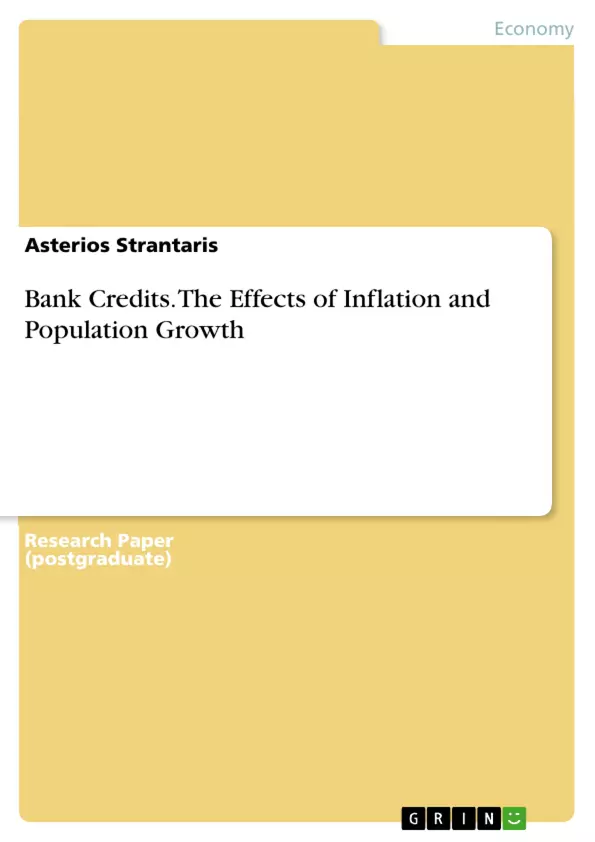In the following paper it will be a further examination between the economic growth which represented by GDP, with inflation and gross capital formation. In the first sector it will be a literature review in which will be demonstrated the academic findings about the relationship of the variables. In the second part there are empirical tests which have been made with the use of the E-views program in order to test the relationship of the variables. To conclude, there is a comparison between the academic findings and the empirical findings.
To continue with, in the following text will be examined how the population growth rate and inflation can affect the bank credit. It is also easily understood that there are and many other factors that should be taken into account before to be able to conclude whether the inflation and population growth rate have a positive or negative impact on the bank credit. Further, there are plenty factors that can influence the bank credit such as interest rates, banking regulations, especially after the economic crisis of 2008, retail banking, etc. In this project will be examined how these variables interact in the example of the United States of America. The data that will be used are from 32 observations, more precisely from the year 1984 to 2015.
Inhaltsverzeichnis (Table of Contents)
- Introduction
- Literature Review
- Theoretical Model and Data Description
- Economic Results and Interpretation
- Conclusion
- References
Zielsetzung und Themenschwerpunkte (Objectives and Key Themes)
This project aims to examine the impact of inflation and population growth on bank credit in the United States, utilizing econometric methods to test and analyze the relationship between these variables. The study draws upon existing academic literature and conducts econometric tests using the OLS method.
- The role of econometrics in analyzing economic relationships
- The influence of inflation on bank credit
- The relationship between population growth and bank credit
- The impact of the financial crisis of 2008 on bank credit
- Econometric methods and techniques for analyzing economic data
Zusammenfassung der Kapitel (Chapter Summaries)
- Introduction: This chapter introduces the concept of econometrics, its applications in economics, and the specific focus of the project on examining the impact of inflation and population growth on bank credit in the United States.
- Literature Review: This chapter provides an overview of existing literature on bank credit, inflation, and population growth, highlighting the impact of the financial crisis of 2008 on the banking system and the factors that influence bank credit.
- Theoretical Model and Data Description: This chapter presents the theoretical model used to analyze the relationship between inflation, population growth, and bank credit. It also describes the data used in the econometric tests, which covers a period from 1984 to 2015.
- Economic Results and Interpretation: This chapter presents the results of the econometric tests conducted using the OLS method. It analyzes the relationship between inflation, population growth, and bank credit and provides an interpretation of the findings.
Schlüsselwörter (Keywords)
The main keywords and focus topics of this project include econometrics, bank credit, inflation, population growth, financial crisis of 2008, OLS method, SRF, PRF, BPG, White Test, Chow Test, serial correlation, Ramsey Reset Test, and the United States.
- Quote paper
- Asterios Strantaris (Author), 2018, Bank Credits. The Effects of Inflation and Population Growth, Munich, GRIN Verlag, https://www.grin.com/document/510995



